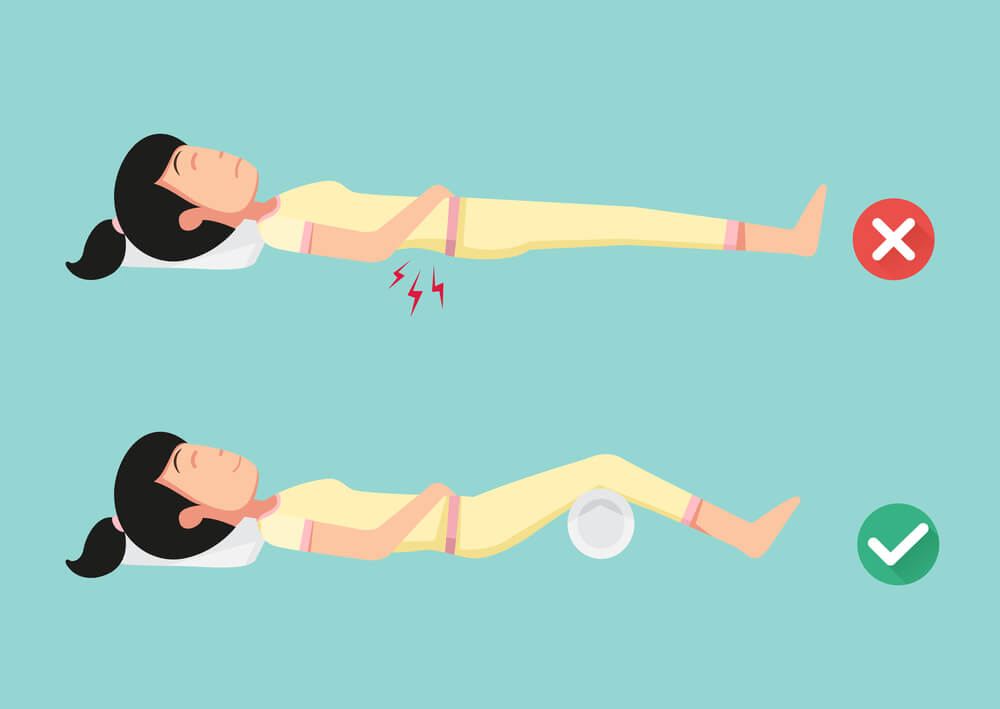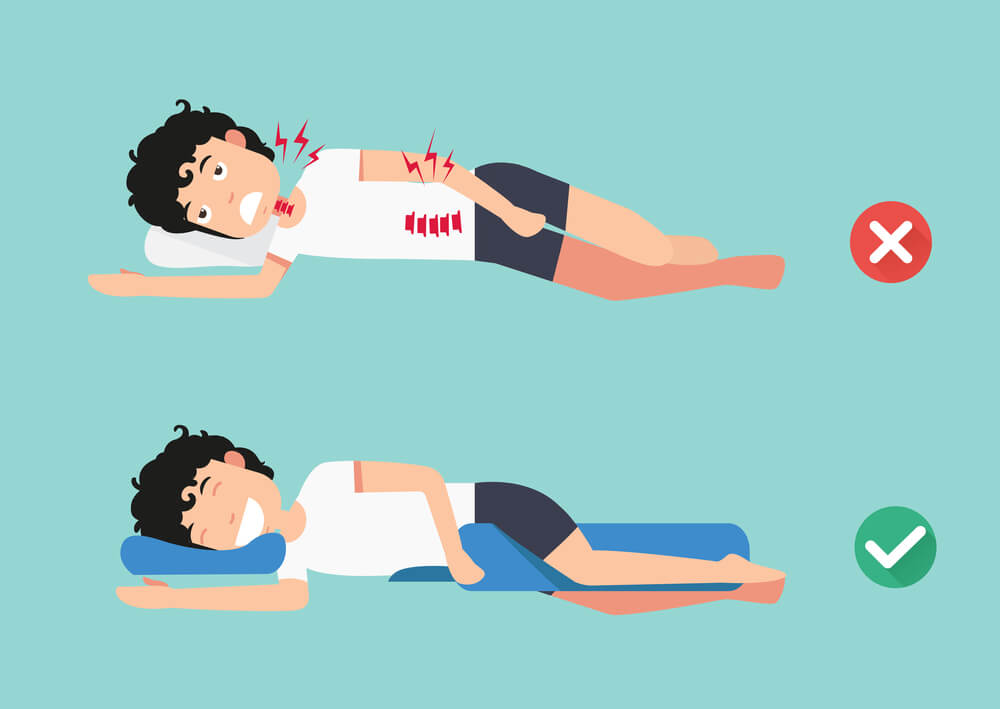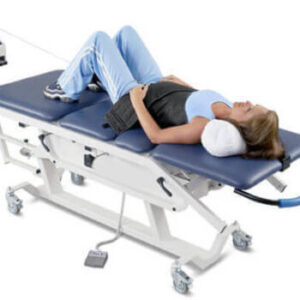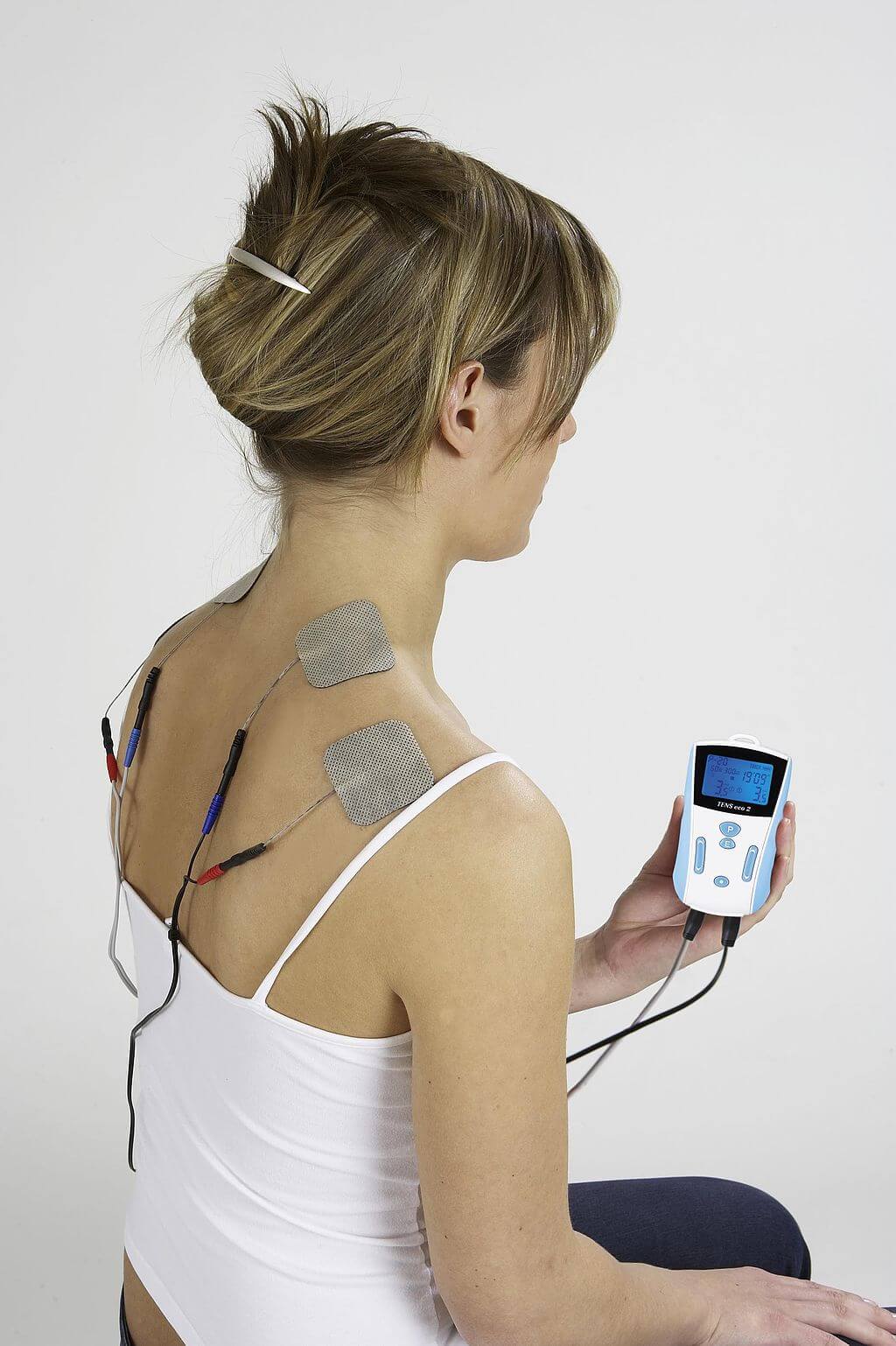How to Relieve Sudden Back Pain (2021 Guide)
Over 80% of people will get back pain at some time in their lives. Many people get Sudden back pain if they lift a heavy object with bad posture while gardening or at the gym. Sudden or acute back pain is defined as back pain that persists for up to 4 weeks. Back pain that lasts between to 4-12 weeks is called subacute back pain. And back pain that lasts longer than 12 weeks is called chronic back pain. Treatments for chronic back pain are discussed by clicking on this article: How to Treat Low Back Pain. The article on this page, however, will be discussing the latest medical evidence of the best treatments for suden low back pain, or back pain that has lasted less than 4 weeks. The good news is that sudden low back pain usually improves within 4 weeks.
KEY POINTS
- A cold pack for 2-3 days followed by a heating pad can help relieve sudden back pain.
- Massage, acupuncture, or chiropractic care are equally effective
- Non-steroidal Anti-inflammatory drugs (NSAIDs) such as ibuprofen or naproxen are effective unless you have medical reasons you cannot take them
- Do not stay in bed longer than 2-3 days as this may delay healing. Try walking slowly as soon as you are able.
How Long Does Sudden Low Back Pain Last?
The good news is that sudden back pain usually improves over 7 weeks for most people, even if it is caused by a bulging or herniated spinal disc. Because low back pain can make it difficult to walk, below are some evidence-based suggestions to help speed up the healing process.
NON-DRUG THERAPIES FOR SUDDEN BACK PAIN
Since medications can often cause side effects, we recommend non-drug therapies first for sudden back pain.
Rest only 1-2 days: Rest only for 1-2 days because staying bedridden for too long will delay healing to your back. Your spine likes movement, so try to walk as soon as you are able. If you sleep on your back, place a pillow under your legs to take pressure off of your back. If you are a side sleeper, bend your knees up and place a pillow between your knees to prevent your back from twisting.
See the diagrams below for the proper sleeping positions when you have sudden back pain.
Cold/Heat – Ice packs are thought to reduce swelling due to sudden back pain. Although there is not much medical evidence that cold packs relieve sharp back pain, my back surgeon recommends it after a back injury to slow down the inflammation much like you would place an ice pack on a sprained ankle. We recommend a cold pack for the first 2-3 days after a back injury before switching to a heating pad. Wrap an ice pack in a thin cloth and apply the cold pack to the skin for 15-20 minutes at a time. Do not apply the ice pack directly to the skin without a cloth barrier as this can lead to a freeze burn.
Heat can reduce muscle spasms. Apply a heating pad to the skin for 15-20 minutes at a time. Do NOT apply the heat too long and do not use the highest setting, which can cause you to burn yourself. Also, do NOT apply a heating pad to any areas where you have applied medication on your skin. We recommend you apply a cold pack for 2 to 3 days before switching to a heating pad. Alternatively, you can also use a jacuzzi for about 15-20 minutes if you have access to one.
Walking: After resting for a day or two, begin walking short distances and carry on your normal activities as soon as you are able because your movement will heal your back faster than remaining in bed. Staying in bed too long will delay healing because your spine likes movement.
Massage – There is no evidence that a massage will help your sudden back pain to heal faster, but it will certainly make you feel good and relax. Getting a massage after a back injury is up to your personal preference and whether you have a skilled massage therapist. I personally do not like getting a massage right after an injury because sometimes my back has felt worse after a massage. So make sure to ask your massage therapist to be gentle with your lower back during the massage.
Acupuncture – Acupuncture comes from traditional Chinese medicine where thin needles are inserted into strategic points on your body to stimulate nerves and reduce pain. Some studies have shown that acupuncture helps relieve sharp lower back pain, so it may be worth a shot especially if your insurance covers acupuncture.
Spinal Manipulation: Both chiropractors and physical therapists can perform spinal manipulations or adjustments. These spinal adjustments can lead to reduction of pain as well as improve your movement.
Popular Therapies that have little evidence for sudden back pain
- Traction Or Non-Surgical Spinal Decompression: Traction or spinal decompression involves stretching and relaxing your spine by wrapping a harness around your lower back (see diagram below). The theory is that the motorized stretching and relaxing motion of your spine will realign any bulging or herniated spinal discs that are causing lower back pain.
Unfortunately, there is not enough evidence that traction or non-surgical spinal decompression work for sudden low back pain. Plus, the cost of about 20 treatments can range from $2,000 or more. I have personally tried non-surgical spinal decompression, but it was only mildly helpful. I personally would not recommend it especially since it is very expensive.
- Yoga: Yoga is not helpful for sudden back pain (back pain less than 4 weeks), but it is helpful for chronic back pain (back pain longer than 12 weeks). If you have chronic low back pain, check out the article: The Best Exercises for Chronic Low Back Pain.
- TENS: TENS stands for transcutaneous electrical nerve stimulation. TENS units work by sending electric impulses through adhesive pads that have electrodes attached to them (see image below). These electric impulses relieve pain by causing your muscles to contract and relax. Although physical therapists use these devices for their patients, the medical evidence surprisingly does not show that TENS units are effective for sudden low back pain.
OVER-THE-COUNTER MEDICATIONS FOR SUDDEN BACK PAIN
- Non-Steroidal anti-inflammatory drugs (NSAIDs): NSAIDs are very popular over-the-counter anti-inflammatory pain medications that include Ibuprofen (Advil; Motrin) and Naproxen (Aleve). The dose I usually take for sudden back pain are ibuprofen (400 to 600 mg four times daily) or naproxen (220 to 440 mg twice daily) for about three to five days around the clock after sudden back injury. Please talk to your doctor first before taking these doses since these doses are higher than usual doses similar to the prescription strength doses. Do not take NSAIDs if you have kidney disease, heart problems (such as a history of a heart attack or stroke), gastro-intestinal bleeding (such as bleeding or an ulcer from the stomach, upper intestine, or esophagus), or very high blood pressure. You will want to take NSAIDs with food to minimize stomach upset.
Topical NSAIDs such as diclofenac gel (Voltaren gel), unfortunately, do not have medical evidence that they work for sudden back pain. However, it may be worth a try if you cannot take oral NSAIDs because of side effects. My back surgeon said that diclofenac gel helped relieve back pain for some of his patients.
To learn more about NSAIDs, click on the article: “Is Naproxen or Ibuprofen Better for Back Pain?”
- Acetaminophen (Tylenol): Acetaminophen is not as effective as NSAIDs (see above) for sudden low back pain, but it is worth a try if you have medical reasons (contraindications) that prevent you from taking NSAIDs. Do not take acetaminophen if you have liver disease. Please also remember that many cough and cold medications already contain acetaminophen. Do not combine acetaminophen with cough and cold medications if they already contain acetaminophen because this can lead to overdose.
- Lidocaine patch: There is no evidence that lidocaine patches work for sudden back pain. However, if you are not able to take NSAIDs (see above) due to medical reasons, then lidocaine patches may be worth a try. Some patients swear by them.
- Capsicum patch (Salonpas): Salonpas comes in many forms. Some formulations contain capsicum, which gives a very hot sensation and has some evidence to help with sudden low back pain. You can also try the version that contains methylsalicylate/camphor/menthol, but there is less evidence that these ingredients work for sudden back pain. Always read the back of the box to see what ingredients are listed.
- Other topical medications: Topical medications include creams, gels, or ointments that you apply to the skin. There are many over-the-counter topical medications you can use for sudden lower back pain such as Ben-Gay, Tiger Balm, BioFreeze, etc. Although we did not find strong medical evidence to show that they are effective, they may be worth a try if you are unable to take NSAIDs (see above).
- Devil’s Claw (Harpagophytum procumbens): Devil’s Claw is an herbal that has anti-inflammatory properties. Small medical studies have shown that Devil’s Claw 100mg per day may help with back pain. I first tried Devil’s Claw when I heard about it from Dr. Oz. However, it did not really help with my back pain. This 100mg dose is also very difficult to find. Because I could not find this dose at the store, I ended up taking a higher dose. I did not get any side effects, but neither did it work.
FINAL TIPS ON RELIEVING SUDDEN BACK PAIN
If you find yourself on your back because you just injured your back after lifting a heavy object or twisted your body in the wrong way, take hope because 70-90% of back injuries get better within 7 weeks.
For the first 1 to 2 days, make sure to rest and apply an ice pack (wrapped in a thin cloth) to your lower back for about 20 minutes about four to six times throughout the day. You can also take some ibuprofen or naproxen as long as you do not have medical reasons for not being able to take them. Do not stay bedridden for more than 2 days since staying in bed can delay healing. If you are able, try to walk a little bit throughout the day because your spine likes movement.
Once you recover, you still need to be careful because about half of patients with a recent back injury get injured again within 6 months. We shall discuss in another article how to prevent back pain once you have recovered from a sudden back injury. So, stay tuned.






